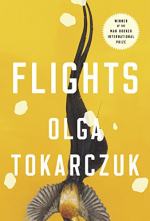
|
| Name: _________________________ | Period: ___________________ |
This test consists of 15 multiple choice questions and 5 short answer questions.
Multiple Choice Questions
1. In what way does the pilgrim who reveres a philosopher interpret what he observes?
(a) He concludes that all beings are one.
(b) He concludes that chaos is inevitable.
(c) He concludes that the point of life is to graze the dust in search of mystery.
(d) He concludes that the point of life is to mimic others' actions.
2. The two businessmen sitting next to the narrator are traveling to a conference on what subject?
(a) Nuclear power.
(b) Electric vehicles.
(c) Wind power.
(d) Solar radiation.
3. The first pilgrim featured in the narrative tells the narrator that the things he has seen are now what?
(a) Spoiled.
(b) Fixed in time.
(c) Invisible.
(d) His.
4. The narrator states that darkness causes her to feel like taking what action?
(a) Running.
(b) Leaving.
(c) Exploring.
(d) Sleeping.
5. When the narrator dreams of a huge cloud on the horizon, in what location does she find herself in the dream?
(a) Bikini Island.
(b) My Lai.
(c) Tahiti.
(d) Aruba.
6. The sanskrit Kali Yuga refers to which cycle of the world?
(a) The end of the cycle.
(b) The final cycle.
(c) The first cycle.
(d) The endless cycle.
7. The narrator deems her friend who does not like to travel alone to be a bad what?
(a) Date.
(b) Liar.
(c) Pilgrim.
(d) Person.
8. What emotion does Dr. Blau see when he looks into the man's eyes who also hopes to discover preservation secrets?
(a) Love.
(b) Fear.
(c) Triumph.
(d) Reluctance.
9. What type of beverage does the narrator invoke to describe the way in which darkness unfolds?
(a) Juice.
(b) Milk.
(c) Coffee.
(d) Water.
10. What part of a woman's body does the narrator compare to fingerprints in relation to uniqueness?
(a) The breast.
(b) The vulva.
(c) The tongue.
(d) The earlobe.
11. What book does Erik read again and again while he is in prison?
(a) Moby Dick.
(b) A Clockwork Orange.
(c) In Cold Blood.
(d) A Tale of Two Cities.
12. In what location does Dr. Blau store all of his tissue samples and medical exhibits?
(a) In the university laboratory.
(b) The refrigerator of his home.
(c) The bathtub of his home.
(d) The basement of the university.
13. The narrator comes to believe that change is different from permanence in what way?
(a) Change is inevitable, while permanence is chosen.
(b) Permanence is nobler than change.
(c) Change is nobler than permanence.
(d) Permanence is easier than change.
14. The ruler at the center of two vignettes decides to bring only which members of his family along during his escape?
(a) His children.
(b) His wives.
(c) His sisters.
(d) His parents.
15. What is the narrator's destination during her first true experience with travel?
(a) A park.
(b) A river.
(c) A library.
(d) A swimming pool.
Short Answer Questions
1. One of the vignettes focuses on a poet who works in what capacity?
2. One of Flight's vignettes sees the narrator judging a friend of hers who hates to travel in what manner?
3. When the narrator attends the lecture about travel psychology, what does she conclude about its length?
4. The fact with which the narrator is most infatuated has to do with what part of the human body?
5. The first vignette in Flight describes the narrator's discovery of what element as a toddler?
|
This section contains 543 words (approx. 2 pages at 300 words per page) |

|




